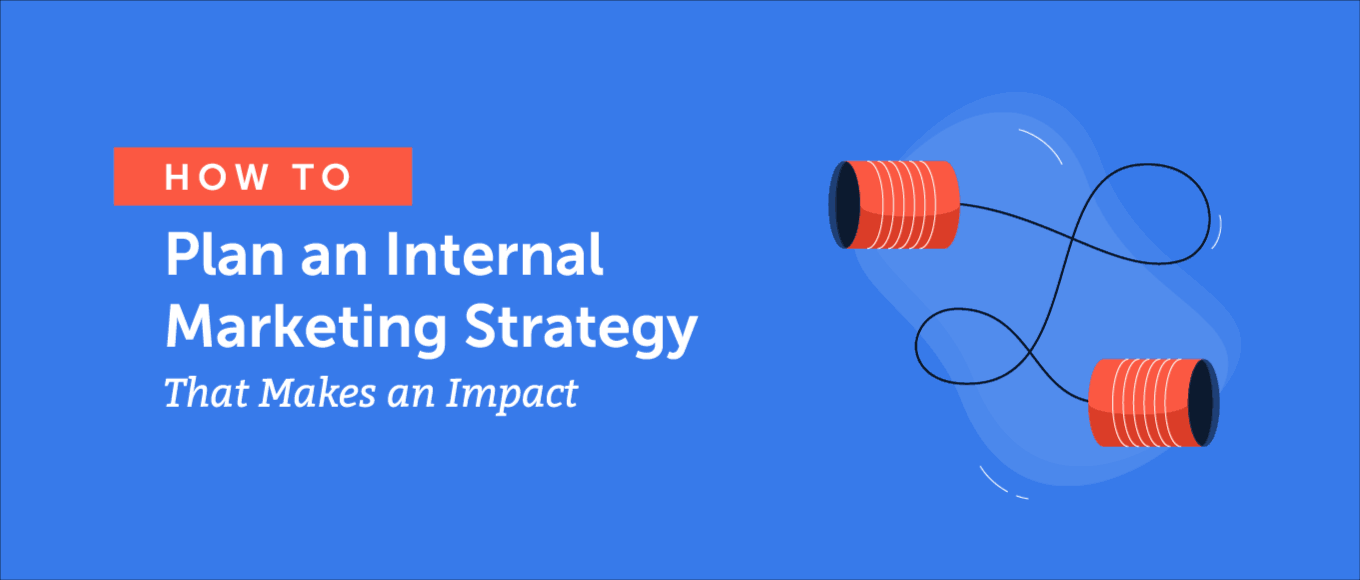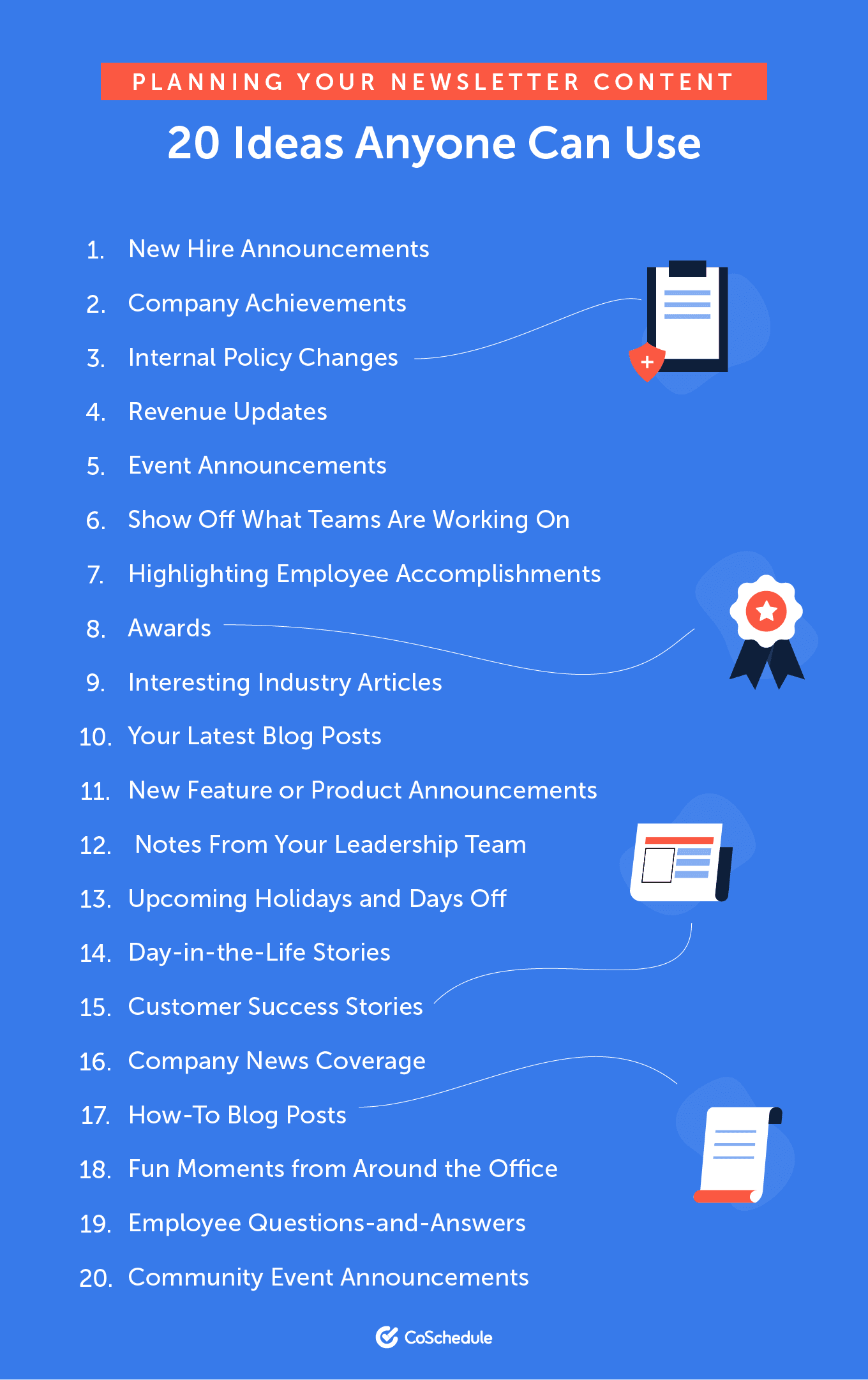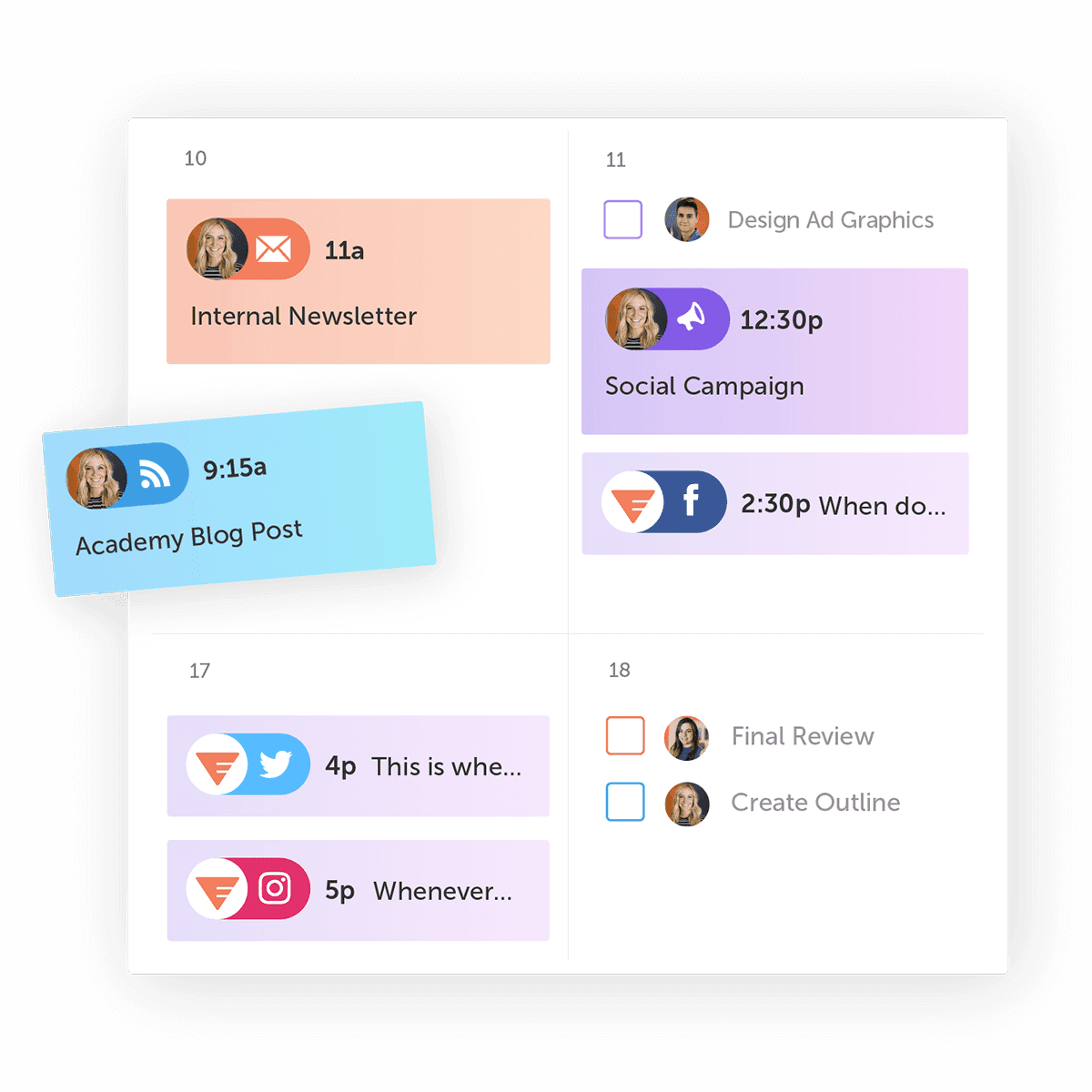How to Plan an Internal Marketing Strategy That Makes an Impact
 As a marketer, you spend hours every day looking for new campaigns that’ll make you stand out.
The only problem? You’re probably spending all of that time focusing on a strategy that deals only with your customers. After all, they’re the people bringing money in. You won’t make a profit without them.
However, you’re forgetting about the people who actually make that happen: Your staff.
Here’s how you can build an internal marketing strategy that focuses on them.
As a marketer, you spend hours every day looking for new campaigns that’ll make you stand out.
The only problem? You’re probably spending all of that time focusing on a strategy that deals only with your customers. After all, they’re the people bringing money in. You won’t make a profit without them.
However, you’re forgetting about the people who actually make that happen: Your staff.
Here’s how you can build an internal marketing strategy that focuses on them.
How to Plan an Internal Marketing Strategy that Makes an Impact
Click To TweetWhat is Internal Marketing?
Are you unsure what internal marketing actually is? It can often get confused with the name of your marketing team. But here’s an easy internal marketing definition: A type of marketing strategy that focuses on building loyalty, skill, and engagement with your employees by “selling” your product and vision to them. You want them to truly understand why you’re selling those products so they can communicate that with external people—including your customers.Internal vs. External Marketing
Every business should have two types of marketing strategy: internal and external.Every business should have two types of marketing strategy: internal and external.
Click To Tweet
Why is Internal Marketing Important?
You might be thinking that internal marketing is just a phenomenon used by supersized companies like Apple or Amazon. But it’s not. Small and medium-sized businesses with fewer employees can still benefit from an internal marketing strategy for three main reasons:It Can Reduce Staff Turnover
We’ve already touched on the fact that the goal of internal marketing is to build trust and loyalty with your employees. You do that through education—a combination of marketing messages that educates them about their job and the service/product they sell. The concept being: The more they know, the more confident they’ll be explaining it to external people. A huge benefit of this education is that it builds company culture; a group of people working towards the same goal. This has a huge knock-on effect on employee turnover—especially considering that employees who don’t like their organization’s culture are 24% more likely to quit. (The problems don’t stop there, though. Staff turnover can be expensive. Direct replacement costs can reach as high as 50%-60% of an employee’s annual salary.)
(The problems don’t stop there, though. Staff turnover can be expensive. Direct replacement costs can reach as high as 50%-60% of an employee’s annual salary.)
Provide Better Service to Your Customers
Every company has an overarching goal to provide the best product or service to their customers.Every company has an overarching goal to provide the best product or service to their customers.
Click To TweetImprove Brand Consistency
Did you know that the average revenue increase attributed to always presenting the brand consistently is 33%? An internal marketing strategy helps bring you closer to that revenue increase because it promotes the company’s brand values and overall mission. The employee on the receiving end knows the importance of why you do what you do. And, more importantly, they’ll make an effort to reflect it when they’re representing you (either face-to-face with customers, or when they talk about their place of work outside the office.)Who Takes Control Over an Internal Marketing Strategy?
The majority of companies have a HR manager that handles everything related to your employees. But, they might not be best-placed to handle your internal marketing strategy alone. Your marketing team should take control over it. Sure, you should ask for your HR manager’s help with the details (like upcoming news, important announcements, etc), but this is still a marketing campaign, and should be treated like one. The only difference is your audience.5 Internal Marketing Examples
The way you communicate with internal staff is wildly different to the channels you use for traditional external marketing campaigns. So, what exactly does internal communication look like? Here are five internal marketing examples to draw inspiration from:1. Staff Onboarding Process
Congratulations! You’ve just brought a new member of staff on-board. Now you need to guide them through their first few weeks, giving them all the information they need to know. After all, organizations with a strong onboarding process improve new hire retention by 82% and productivity by more than 70%. But don’t waste time with a boring collection of Google Docs to do that. (Chances are, your new team member won’t want to read it—making it a total waste of everyone’s time.) Instead, create an internal marketing email sequence that will guide them through their first week. You can talk about things like:- Your mission
- How your product/service works
- Your average customer
- The story of how the company started
- The people in their team
2. Company News and Announcements
Do you have exciting news about your company? Tell your team! Nobody likes feeling out of the loop, and you can build excitement by involving your employees in the build-up to something that’s happening. A company newsletter is the perfect way to do this. Create a list of everyone working for your business, and plan a schedule to send an internal newsletter—like once a month, for example. Use it as your chance to communicate with them and keep them up-to-speed with things happening. ...But what happens if you don’t have any exciting news to share? That doesn’t mean you have to neglect this internal marketing idea altogether. Here’s a list of ideas you can use to create an interesting internal marketing newsletter:
3. Recruitment Help
You can write the best job ad in the world. But if nobody sees it, you won’t hire anyone. Social media and job boards can only go so far. Why not ask your employees to help spread the word whenever you’re hiring? They might have worked with someone at a previous job, or know someone from their own professional network, who’d be a perfect fit for your role. You can use internal marketing to do this. Put together a pre-made piece of text they can post on Facebook, such as:“Looking for a new job? Come and work with me at [company name]! We’re looking for a [job title]. Find out more here, or message me if you’ve got any questions: [job ad link]”Studies have shown that brand messages reached 561% further when shared by employees vs the same messages shared via official brand social channels. It’s a simple (and easy) way to get in front of more qualified potential employees.
4. New Product, Feature, or App Webinars
Earlier, we mentioned how company news shouldn’t just be something your CEO or founder gets to know about. If you’re:- Planning a new feature for your app
- Looking to add another service to your roster
- Thinking about selling a new product
5. Hold Interesting Debates
Debating is a valuable skill that most people like to think they have, but rarely do. It teaches us about listening to other people’s point of view, and articulating your own opinions fairly (without offense)—both of which are superb skills that any company should look for in their staff. Debates don’t have to be about touchy subjects like politics, though. You can hold friendly debates as part of your internal marketing strategy. Let’s say you had a complaint from a customer because they were automatically billed after their free trial ended. Drop a message in your Slack channel and ask for employees to give their opinion on whether the customer is right. You could also ask how they think the situation should be handled, and who is best-placed to handle it. Dig through the answers and find those that fit with your company policies, missions, and values. Show the best answer to all staff and explain why you picked those as the best. This debate will get your team communicating, and also educate them on best practices when the ideal solution isn’t clear-cut. That’s bound to help them handle a tricky situation like that in future.How to Outline an Internal Marketing Strategy
Are you ready to start engaging your employees with an internal marketing strategy?Are you ready to start engaging your employees with an internal marketing strategy?
Click To TweetYour Goals
What do you want to get out of your internal marketing strategy? You’ll need to work backwards; think of your goal and plan the steps to get there. Common goals include:- Increase staff engagement
- Build knowledge about the product/service/brand
- Grow employee loyalty
- Reduce staff turnover
- Increase customer satisfaction
- Boost sales
The Audience
We already know that internal marketing focuses on people working for your company. But we still need to be uber-specific about who will need to receive internal marketing communications in order to meet your goals. This could be your whole team, or different employees in different departments. For example: If your goal is to improve customer support, you could prioritize messages for support agents. However, if it’s to improve staff engagement or reduce turnover, you might want your audience to be your entire company.Your Marketing Message
Once we know who we’re targeting and the end goal, we can start to think of the messaging that can help us achieve it. Make a list of specific things you want to communicate internally—such as recruitment help or company news, along with any important events in the year. (You can plan a calendar for this, marking important dates for your company.) But if you don’t have a piece of news to announce, think of the content your staff will want to read that ties in with your goal. Side note: Notice how we emphasized the word “want.” You can spend hours writing an incredible company newsletter, but if nobody is interested in it, it’s a waste of time. Survey your staff and ask what they actually want to see.Your Internal Communications Tactics
You’ve nailed down the thing you want to say. The next question is: How will you communicate that message internally? This distribution is one of the biggest differentiators between internal and external marketing. It’s unlikely you’ll use the same public channels for internal messages. You want to close-off messages and only allow employees to view them. Some channels are perfect for this, such as:- Email newsletters
- Slack
- LinkedIn or Facebook Groups
- Skype or Zoom
How to Measure the Impact
Your internal marketing strategy doesn’t finish after sending a flurry of messages. Just like any other customer-facing campaign, you need to determine how you'll report on internal marketing results—tying back to your main goal (AKA, the reason why you’re doing this, in the first place.) The metrics you’ll track depend entirely on your goal. Let’s put that into practice with the most common internal marketing goals:- Build staff engagement > Measure how responses change in your bi-yearly employee feedback surveys. Have fewer staff looked for other jobs since starting your campaign?
- Reduce staff turnover > Check your turnover rate year-on-year. Are more staff sticking around once you implement your new strategy?
- Improve customer satisfaction > Monitor how your NPS changes. You might find that the internal marketing campaign you’ve given to your support team results in happier customers.



